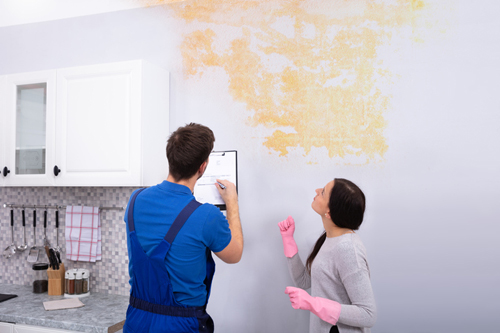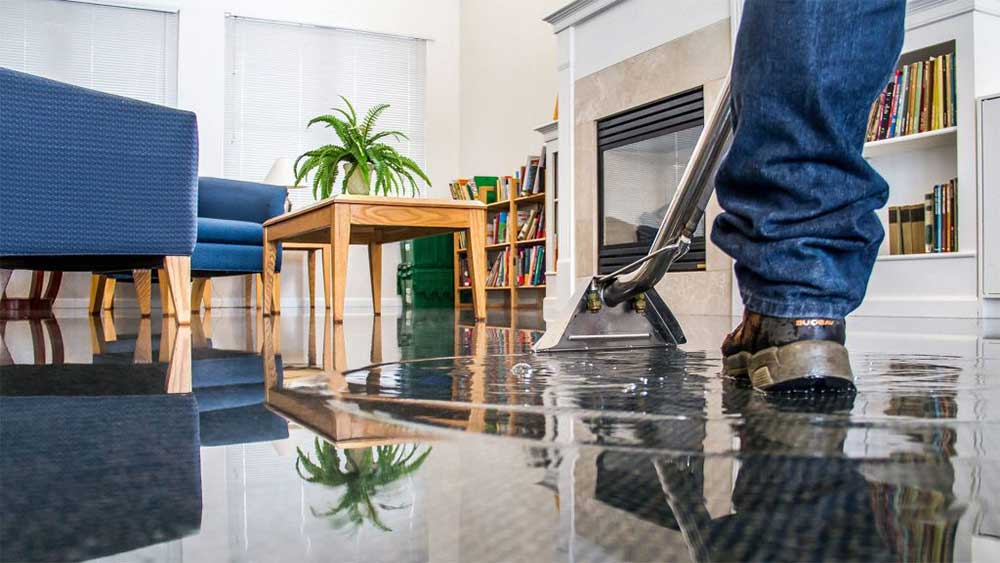6 Water Damage Remediation Do's and Don'ts.
6 Water Damage Remediation Do's and Don'ts.
Blog Article
The author is making a few good annotation on the subject of Ways to Reduce The Risk Of Fire And Water Damage as a whole in this article beneath.

Though water provides life, water intrusion on components where it's not intended to be can lead to damages. It can peel away surfaces as well as deteriorate the structure if the water soaks right into your framework. Mold as well as mildew likewise grow in a damp environment, which can be dangerous for your wellness. Houses with water damage odor old and also moldy.
Water can come from many sources such as typhoons, floods, burst pipes, leaks, and also drain concerns. In case you experience water damage, it would certainly be excellent to understand some safety precautions. Below are a few guidelines on how to deal with water damage.
Do Prioritize Home Insurance Protection
Water damages from flooding dues to hefty winds is seasonal. Nonetheless, you can also experience an abrupt flooding when a damaged pipe suddenly ruptures into your residence. It would be best to have house insurance that covers both disasters such as natural disasters, and emergency situations like busted plumbing.
Don't Fail To Remember to Turn Off Energies
In the event of a calamity, particularly if you live in a flood-prone location, it would be suggested to turn off the main electrical circuit. This removes power to your entire house, stopping electric shocks when water comes in as it is a conductor. Furthermore, don't neglect to shut off the primary water line shutoff. When floodwaters are high, furnishings will move around and also trigger damages. Having the major shutoff turned off avoids more damage.
Do Remain Proactive as well as Heed Weather Condition Notifies
Pay attention to discharge cautions if you live near a river, creek, or lake . Doing so minimizes prospective property damages.
Do Not Disregard the Roof
You can prevent rain damages if there are no openings and leaks in your roof. This will prevent water from flowing down your wall surfaces and soaking your ceiling.
Do Pay Attention to Small Leaks
A ruptured pipe does not happen over night. Usually, there are red flags that indicate you have actually weakened pipelines in your home. For example, you might notice bubbling paint, peeling wallpaper, water touches, water stains, or dripping noises behind the wall surfaces. At some point, this pipeline will certainly break. Ideally, you should not await points to rise. Have your plumbing repaired before it results in substantial damages.
Do Not Panic in Case of a Ruptured Pipeline
Maintaining your presence of mind is essential in a time of dilemma. Due to the fact that it will certainly stifle you from acting fast, worrying will just compound the problem. Timing is crucial when it comes to water damage. The longer you wait, the more damage you can anticipate. Hence, if a pipeline bursts in your residence, quickly turned off your major water shutoff to remove the source. Disconnect all electrical outlets in the area or transform off the circuit breaker for that part of the residence. Call a trusted water damages repair expert for support.
Water provides life, water intrusion on parts where it's not supposed to be can result in damage. Homes with water damage smell musty as well as old.
Water damages from flood fees to hefty winds is seasonal. You might see bubbling paint, peeling wallpaper, water streaks, water spots, or trickling audios behind the walls. When it comes to water damages, timing is essential.
Some Do's & Don't When Dealing with a Water Damage
DO:
Make sure the water source has been eliminated. Contact a plumber if needed. Turn off circuit breakers supplying electricity to wet areas and unplug any electronics that are on wet carpet or surfaces Remove small furniture items Remove as much excess water as possible by mopping or blotting; Use WHITE towels to blot wet carpeting Wipe water from wooden furniture after removing anything on it Remove and prop up wet upholstery cushions for even drying (check for any bleeding) Pin up curtains or furniture skirts if needed Place aluminum foil, saucers or wood blocks between furniture legs and wet carpet Turn on air conditioning for maximum drying in winter and open windows in the summer Open any drawers and cabinets affected for complete drying but do not force them open Remove any valuable art objects or paintings to a safe, dry place Open any suitcases or luggage that may have been affected to dry, preferably in sunlight Hang any fur or leather goods to dry at room temperature Punch small holes in sagging ceilings to relieve trapped water (don't forget to place pans beneath!); however, if the ceiling is sagging extremely low, stay out of the room and we'll take care of it DO NOT:
Leave wet fabrics in place; dry them as soon as possible Leave books, magazines or any other colored items on wet carpets or floor Use your household vacuum to remove water Use TV's or other electronics/appliances while standing on wet carpets or floors; especially not on wet concrete floors Turn on ceiling fixtures if the ceiling is wet Turn your heat up, unless instructed otherwise

I stumbled upon that blog entry on What You Can Do At Home To Prevent Fire And Water Damage when exploring the web. Do you know about another individual who is fascinated by the subject? Take a moment to share it. Thanks for your time invested reading it.
Report this page